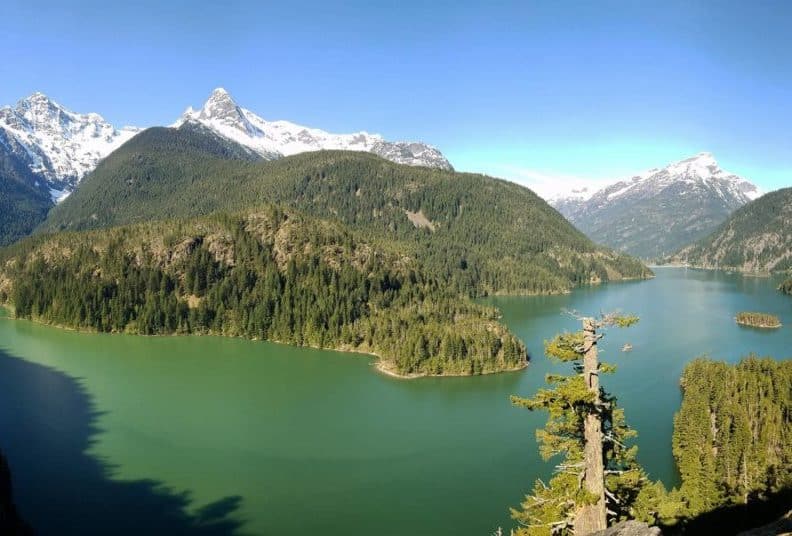
Photo Roundup: May 14 2017
Every Sunday I will be posting photos collected from various NCI graduate students and staff. Please enjoy this glimpse into our everyday lives here in the North Cascades.
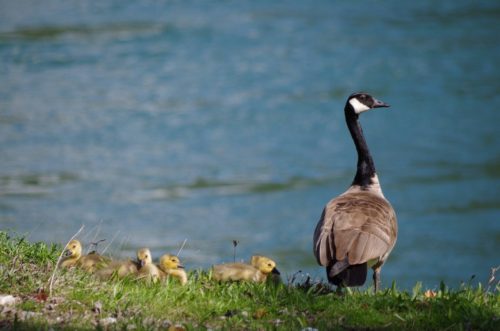
Photo by Alex Patia
North Cascades Institute Naturalist and graduate M.Ed. alumni, Alex Patia, snapped this photo of a Canada goose watching over her goslings near his front lawn in the town of Diablo. Canada Geese love to hang out on open lawns as they can feed on grass and (especially with their young) easily spot any approaching predators. These birds mate for life and pairs stay together throughout the year. Most Canada Geese do not breed until their fourth year.
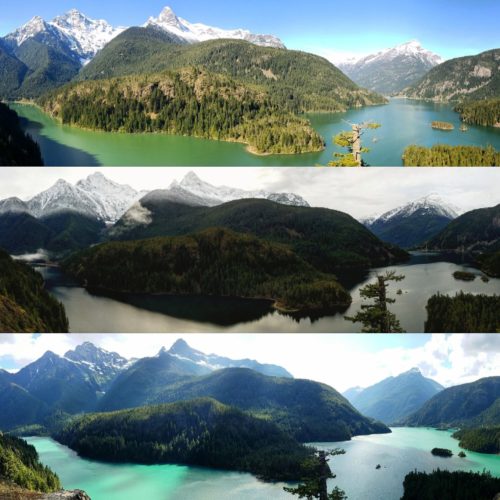
Diablo Lake from the overlook off Highway 20. Photo by Angela Burlile
The North Cascades Institute Environmental Learning Center is right on the shore of Diablo Lake and it has been a fun little practice of watching it slowly change with the seasons. Much of the water in this lake is fed by glaciers in Thunder Creek Basin. Skagit gneiss (a mineral) or as we tell Mountain School students, ‘glacial flour’, is eroded by ice and flows down glacial streams, entering Diablo Lake. As the sun hits these tiny rock particles suspended in the lake, they reflect off this beautiful jade green color. In the spring and summer when runoff is higher, the lake gets brighter! The top photo is from this past week, the middle photo from December and the bottom photo from last July.

Flowering bearberry. Photo by Daniel Dubie
Graduate M.Ed. student, Daniel Dubie, has done a fantastic job documenting the spring wildflowers in the upper Skagit Valley. Bearberry (Arctostaphylos uva-ursi) is a ground covering mountain evergreen with a beautiful urn flowers. It can be found flowering all around the Environmental Learning Center.

Dull Oregon-grape. Photo by Daniel Dubie
This familiar spiky leaved evergreen is flowering all throughout the low elevation forests in the North Cascades right now. Once pollinated, the cluster of small yellow flowers on the Dull Oregon-grape (Mahonia nervosa) will soon be replaced by edible purple berries. Watch out, they are a bit tart but great for jelly.

Sword Fern. Photo by Daniel Dubie
A new generation of sword fern (Polystichum minimum) are growing now throughout the forests. This photo was taken behind the Lily shelter at our Environmental Learning Center and shows the intriguing way it unfurls itself.

Wild Ginger. Photo by Daniel Dubie
Dan also found this Wild Ginger (Asarum caudatum) at the Colonial Greek campground. Its amazing alien-like flowers are pollinated by ants.
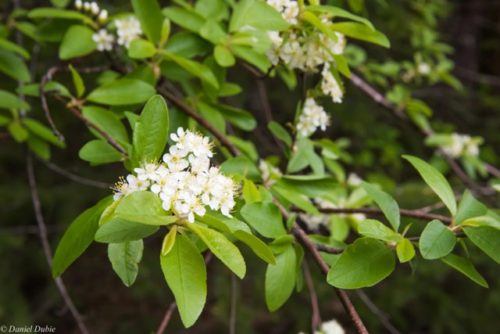
Bitter cherry. Photo by Daniel Dubie
Bitter cherry (Prunus emarginata) is blooming at the Environmental Learning Center, filling the air with fragrance. This one can be seen at the wooden gate by the our parking lot.
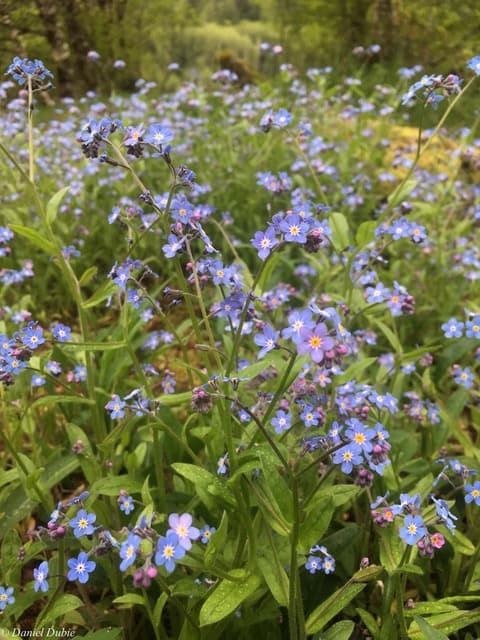
Forget-me-nots. Photo by Daniel Dubie
Let’s not forget the Woods forget-me-not (Myosotis sylvatica). A north country classic, the forget-me-nots are a true harbinger of spring and can be seen along our mountain roads and the shores of the reservoirs. These forget-me-nots were found at Gorge Lake near the Gorge Lake campground.
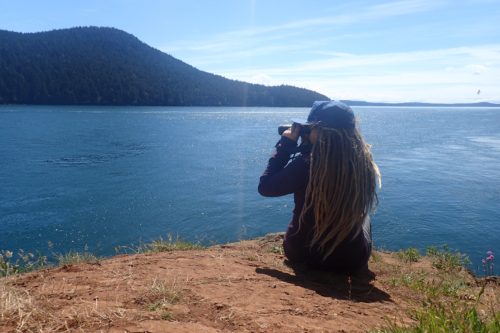
Graduate student, Rachael Grasso, looking for marine wildlife at Washington Park in Anacortes. Photo by Rachael Grasso.
This spring, graduate students enrolled in the final class of their residency, Natural History and Science of the North Cascades. Throughout the quarter, graduate students have been researching a natural history topic of their choosing, which they will present to their cohort at the end of the quarter. Rachael Grasso has focused her studies on the Southern Resident Orca population and their dependency on salmon migrations in the Skagit Watershed. On her way to the Whale Museum in Friday Harbor, Rachael stopped by Washington Park in Anacortes to check out any passing marine life. Stay tuned to Chattermarks, as graduates share their natural history projects throughout the summer months!
Check out previous Photo Roundups here!

